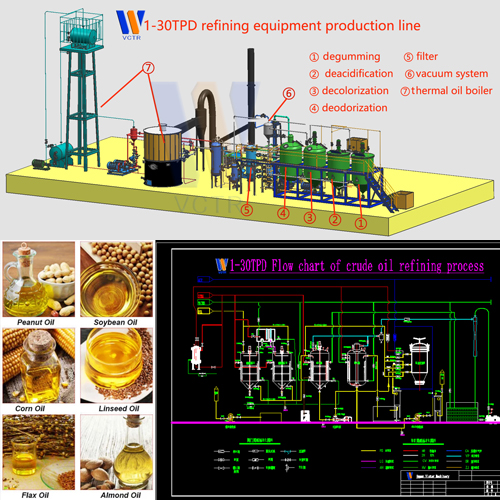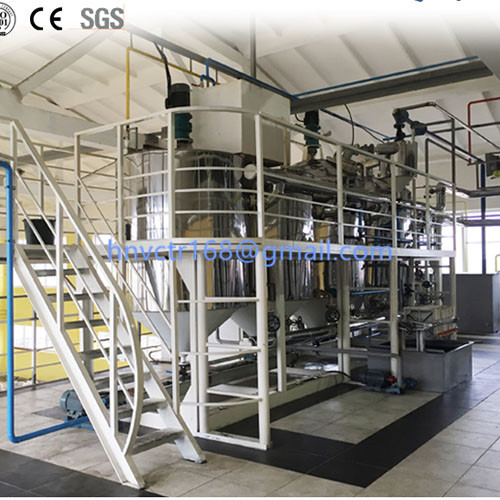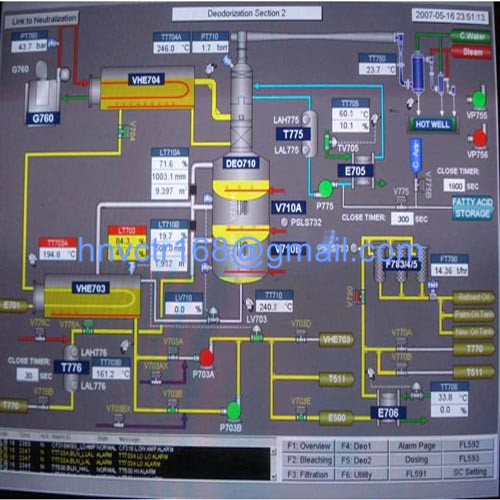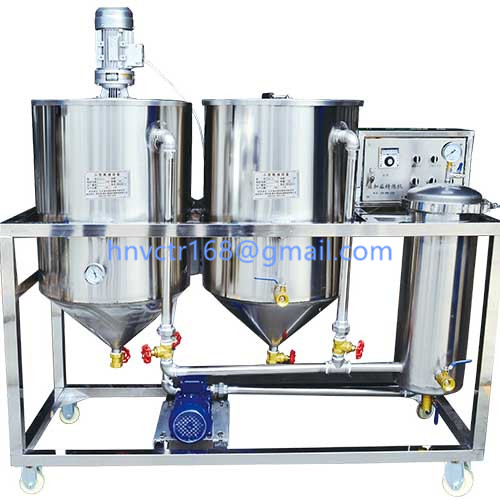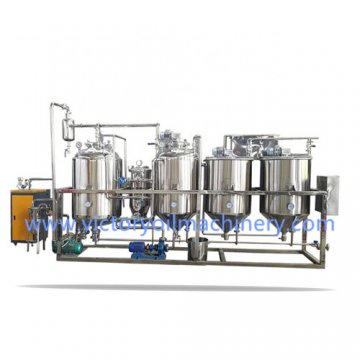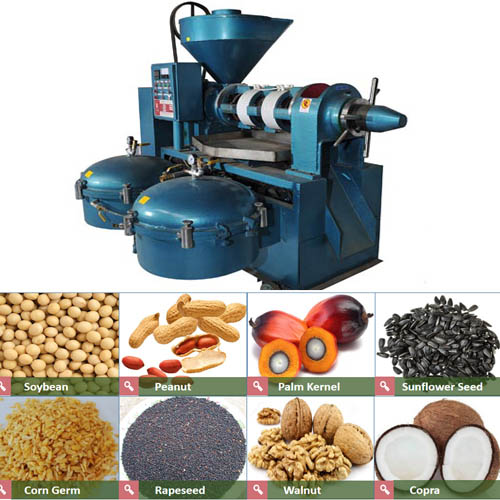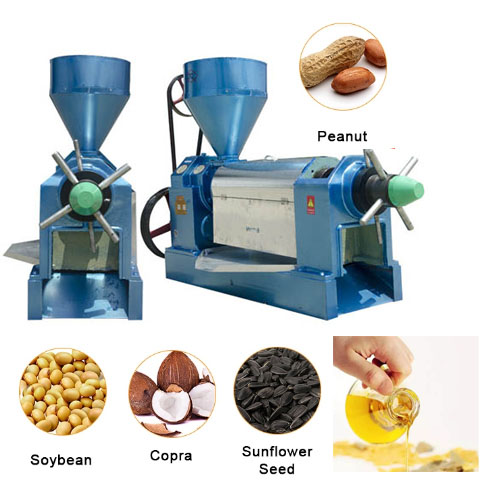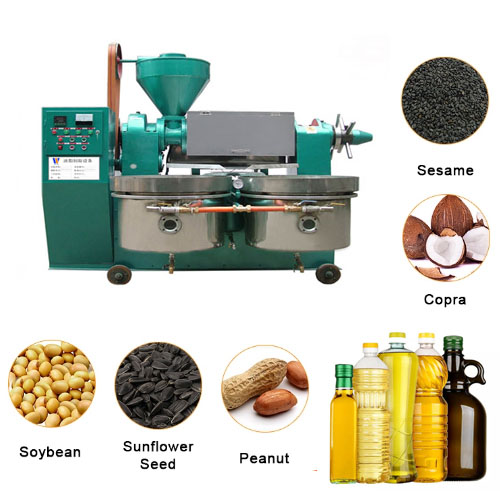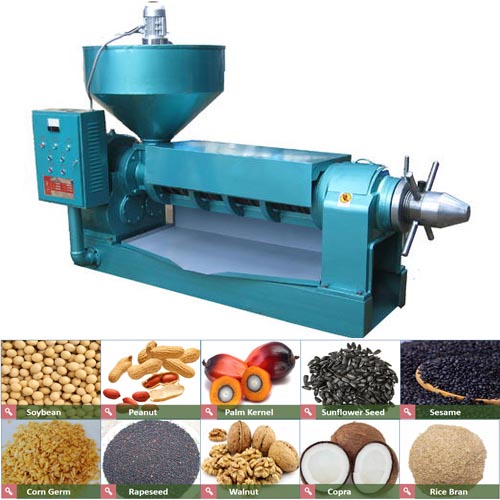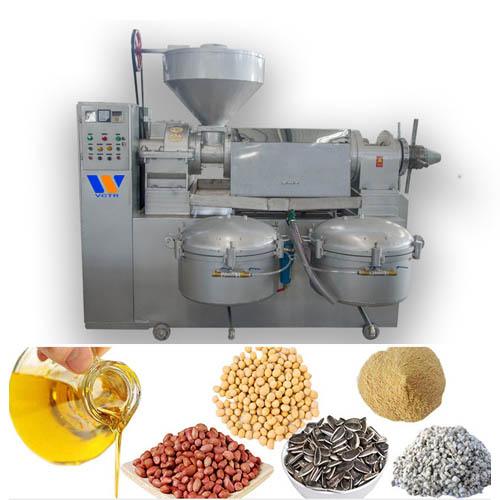Oil refining-Refining by hydration
1. Principle of hydration
The so-called hydration refers to a de-impurity method in which a certain amount of hot water or dilute alkali, salt and other electrolyte solutions are added to crude oil to aggregate and precipitate water-soluble impurities and separate from oil.
During hydration, phospholipids are the main water-soluble impurities that aggregate and precipitate. The molecular structure of phospholipids contains both hydrophobic groups and hydrophilic groups. When the crude oil contains no or very little water, it can dissolve and disperse in the oil; when the phospholipid absorbs and moisturizes, the water combines with the hydrophilic group of the phospholipid to have stronger hydrophilicity and water absorption capacity. It is more enhanced. With the increase of water absorption, the volume of phospholipid particles gradually expands and coagulates into colloidal particles. The colloidal particles attract each other to form colloids, whose specific gravity is much larger than that of oil, and thus precipitate out from the oil.
2. Hydration equipment
The widely used hydration equipment is a hydration boiler. Generally, oil plants are often equipped with 2 to 3 hydration boilers, which are used in turn. It can also be used as an alkali refining (neutralization) pot.
3. Process flow
Pressed crude oil → preheating → adding water →settling (heat preservation) → separating (oil sediment (or incorporating crude oil to be hydrated) to extract oil) → heating brine → settling → skimming oil) → hydrating pure oil → vacuum Dehydration → refined oil;
Extraction crude oil → cooling → hydration → (dilute alkali →) precipitation (→ oil sediment) → drying → refined oil.
4. Technical parameters of hydration and degumming
① Quality requirements of crude oil: moisture and volatile matter ≤0.3%; impurities ≤0.4%.
② Water quality requirements: total hardness (calculated as CaO) <250 mg/L; other indicators should meet the sanitary standards for drinking water.
③The amount of water added for intermittent dephosphorization can be 3 to 5 times of the colloidal content; the amount of water added for continuous dephosphorization can be 1% to 3% of the oil.
④ Hydration temperature. Usually 70~85℃ is used, and the stirring speed for hydration should be variable. There should be at least two speed options for intermittent type.
⑤In the case of adding acids in the hydration and dephosphorization process, the addition amount can be considered as 0.05% to 0.10% of the oil amount. Since continuous dephosphorization equipment contains a small amount of impurities during colloidal separation, large plants should use slag-discharging centrifuges to save time for cleaning discs.
⑥ For the selection of hydration and dephosphorization equipment, intermittent equipment should be used for processing capacity less than 20 tons/day; continuous equipment should be used for processing capacity greater than 50 tons/day.
⑦The hydration and dephosphorization equipment should be arranged in the second-story building workshop, the main equipment and operating instrument switches should be placed upstairs, and the intermediate storage tanks and auxiliary facilities should be placed downstairs.
⑧In general new design workshops, the clearance distance between intermittent hydration boilers can be 0.6 to 0.8 meters, in two groups, the clearance distance between groups can be 1.2 to 1.5 meters, continuous The distance between the type hydration centrifuges can be 1.5 to 1.8 meters.
⑨Quality of finished product:
Phospholipid oil (dry basis): <50%;
Phospholipid content: <0.15% to 0.45% (according to different oil products and requirements);
Phosphorus content: <50~150 mg/kg;
Impurities: ≤0. 15%;
Moisture: <0.2%.
⑩(Continuous) consumption index:
Steam (0.2 MPa): 60~80 kg/ton;
Water (20℃): 0.2~0.4m3/ton;
Electricity: 3 to 5 kw·hour/ton.
The so-called hydration refers to a de-impurity method in which a certain amount of hot water or dilute alkali, salt and other electrolyte solutions are added to crude oil to aggregate and precipitate water-soluble impurities and separate from oil.
During hydration, phospholipids are the main water-soluble impurities that aggregate and precipitate. The molecular structure of phospholipids contains both hydrophobic groups and hydrophilic groups. When the crude oil contains no or very little water, it can dissolve and disperse in the oil; when the phospholipid absorbs and moisturizes, the water combines with the hydrophilic group of the phospholipid to have stronger hydrophilicity and water absorption capacity. It is more enhanced. With the increase of water absorption, the volume of phospholipid particles gradually expands and coagulates into colloidal particles. The colloidal particles attract each other to form colloids, whose specific gravity is much larger than that of oil, and thus precipitate out from the oil.
2. Hydration equipment
The widely used hydration equipment is a hydration boiler. Generally, oil plants are often equipped with 2 to 3 hydration boilers, which are used in turn. It can also be used as an alkali refining (neutralization) pot.
3. Process flow
Pressed crude oil → preheating → adding water →settling (heat preservation) → separating (oil sediment (or incorporating crude oil to be hydrated) to extract oil) → heating brine → settling → skimming oil) → hydrating pure oil → vacuum Dehydration → refined oil;
Extraction crude oil → cooling → hydration → (dilute alkali →) precipitation (→ oil sediment) → drying → refined oil.
4. Technical parameters of hydration and degumming
① Quality requirements of crude oil: moisture and volatile matter ≤0.3%; impurities ≤0.4%.
② Water quality requirements: total hardness (calculated as CaO) <250 mg/L; other indicators should meet the sanitary standards for drinking water.
③The amount of water added for intermittent dephosphorization can be 3 to 5 times of the colloidal content; the amount of water added for continuous dephosphorization can be 1% to 3% of the oil.
④ Hydration temperature. Usually 70~85℃ is used, and the stirring speed for hydration should be variable. There should be at least two speed options for intermittent type.
⑤In the case of adding acids in the hydration and dephosphorization process, the addition amount can be considered as 0.05% to 0.10% of the oil amount. Since continuous dephosphorization equipment contains a small amount of impurities during colloidal separation, large plants should use slag-discharging centrifuges to save time for cleaning discs.
⑥ For the selection of hydration and dephosphorization equipment, intermittent equipment should be used for processing capacity less than 20 tons/day; continuous equipment should be used for processing capacity greater than 50 tons/day.
⑦The hydration and dephosphorization equipment should be arranged in the second-story building workshop, the main equipment and operating instrument switches should be placed upstairs, and the intermediate storage tanks and auxiliary facilities should be placed downstairs.
⑧In general new design workshops, the clearance distance between intermittent hydration boilers can be 0.6 to 0.8 meters, in two groups, the clearance distance between groups can be 1.2 to 1.5 meters, continuous The distance between the type hydration centrifuges can be 1.5 to 1.8 meters.
⑨Quality of finished product:
Phospholipid oil (dry basis): <50%;
Phospholipid content: <0.15% to 0.45% (according to different oil products and requirements);
Phosphorus content: <50~150 mg/kg;
Impurities: ≤0. 15%;
Moisture: <0.2%.
⑩(Continuous) consumption index:
Steam (0.2 MPa): 60~80 kg/ton;
Water (20℃): 0.2~0.4m3/ton;
Electricity: 3 to 5 kw·hour/ton.

